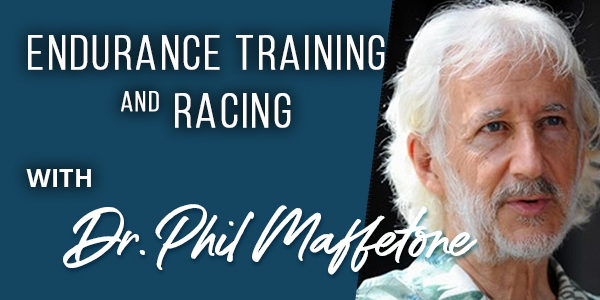
Sports injuries share more with emergency-room trauma than meets the eye.
With injuries soaring in virtually all sports — including CrossFit’s 74 percent injury rate — it’s important to understand these problems are not random or normal, and usually are preventable. The events that lead up to a sports-trauma injury are often the true root of the cause.
The fact is we know a lot about the nature of sports trauma. While the origins are different, there is a surprising similarity between what occurs in athletes and trauma patients in a hospital emergency department. Catherine Dudick, M.D., is a trauma surgeon at AtlantiCare Regional Medical Center in Atlantic City, New Jersey, and recent past chair of the hospital nutrition therapy committee. She is also a triathlete and endurance athlete, and says she understands first-hand that trauma patients and athletes can share similar complications.
“At the cellular level, trauma and exercise resemble each other, with inflammation being the common response,” says Dr. Dudick. “While inflammation drives healing, it can also drive further injury.”
With this in mind, let us explore 10 truths about sports trauma.
1. Trauma happens.
Trauma comes in many forms, and the spectrum ranges from the severe and obvious, such as an auto collision or other accident, to the everyday seemingly minor micro-trauma of any repetitive motion. This may include even seemingly harmless activities like walking, but most certainly running, biking and swimming. While acute micro-trauma is considered the impetus for the body to make performance progress, going beyond this point into excessive training volume and/or intensity can bring more serious trauma and lead to injuries.
“From your body’s perspective, a proper workout enhances health and performance; but done poorly, it’s nothing more than scheduled trauma,” Dr. Dudick says.
Sports trauma grabs headlines, not unlike serious injuries sustained in a traffic or work accident. Professional athletes get injured in the line of duty. Recreational and professional cyclists crash their bikes. Even those in non-contact sports suffer a high incidence of injury, including non-competitive enthusiasts who enjoy aerobic dance, gym workouts and working out on stationary equipment.
Dr. Dudick says that while “trauma happens” in sport and life, this should not imply it is unavoidable or acceptable.
“While unintentional, it is no ‘accident’ that cars collide or tendons rupture,” Dr. Dudick says. “From an engineering and data perspective, multiple fail-safe mechanisms, such as wearing helmets, avoiding distracted driving and following a training program with a proper mix of exercise and rest, can be instituted so as to make trauma less likely to happen at all, and better tolerated when it does occur.”
2. Injury and ill health result from excess exercise trauma.
Trauma comes in both physical and chemical forms. Both are common and so intertwined as to not easily be separated except in discussion. Physical problems include neuromuscular imbalance and other soft-tissue damage (in tendons, ligaments, skin, etc.), and fractures and other bone injury. Chemical trauma can also play a large role in these injuries, and can include bodywide problems for the lungs, immune system, gut, brain and other areas that impact health and fitness.
3. Injury is not normal.
Almost all injuries I’ve seen in endurance athletes were unexpected consequences of some training and racing trauma. I’ve also seen the expected, such as injuries caused by two big athletes sprinting at each other and colliding in mid-field, resulting in major problems such as dislocation, whiplash, or concussion. While this might be considered a so-called normal consequence in football or other contact sports — these athletes actually are more likely to get injured during non-contact training. For endurance athletes it’s clearly not part of the game, except in the case of a crash or stumble (although many of these are associated with human-error).
4. Trauma patients and athletes share much.
It’s not just athletes that relate to trauma when it leads to an injury. Everyone reads, talks and hears about damaged bodies. Many rubberneck while passing an accident site, or pay more attention to the screen when the commentator says, “We must warn you that these pictures are graphic …” These unfortunate images are like looking into an injured body to see the extent of the damage in living color. I’m not saying a runner’s knee is as bad as a serious ER trauma patient, just that they are much more similar than not. If one could view the details of damage within chronic knee pain and the training trauma that instigated it, it would be horrifying.
Dr. Dudick agrees. “Acute and chronic athletic injuries are often silent and invisible to the outside world, but in truth are no less dramatic than a ghastly open wound,” she says.
5. Brain-Body Stress.
One common feature of all trauma is inflammation. More inflammation requires added recovery, and great nutrition to improve healing. The balanced consumption of healthy fats helps the body regulate healing in a powerful way. Avoiding refined carbohydrates, which promote inflammation, is vital too. Without the right recovery and diet, the stress of physical training and racing trauma can lead to HPA (hypothalamic-pituitary-adrenal) axis dysfunction, disturbing hormones, water and electrolyte regulation, muscle balance, and altering sleep and other aspects of health. Even a single workout beyond what the body can tolerate can be traumatic enough to create excess inflammation. Examples include training with too high a heart rate, too much duration, and too much competition.
6. Training trauma is the anthem of the no-pain, no-gain philosophy.
Our society thrives on “more is better.” More miles, more intensity, more racing — it can lead to more trauma, injuries, poor health and reduced performance.
“In the modern era, exercise has become a to-do list item, like anything else, adding stress and the physiologic consequences that other stress brings,” Dr. Dudick says. “This adds to the negative side of the trauma equation instead of the positive.”
She notes that modern exercise routines have replaced the natural exercise our ancestors achieved through natural movement, and physical work they did in the process of living and surviving.
“As we look to enhance fitness, we need to be holistic in our approach,” she says. “Running on a treadmill for an hour cannot equate to working in a garden, digging for an hour.”
She says the physical stress from a natural lifestyle, as opposed to repetitious training, provided a more temperate and consistent, but varied, work load. Training, on the other hand, leads to an attitude of more is better, while promoting less rest and recovery. This eventually leads to injury.
“We must not be overly simplistic and think that all exercise is good for us; we must consider exercise from the perspective of how it enhances our well being,” Dr. Dudick says.
7. The training equation helps balance trauma.
We train, we rest, we progress. Too much or too little, coupled with the lack of rest, allows trauma to accumulate. The equation I’ve used to emphasize this is simple:
Training = Workout + Recovery
An imbalanced training equation leads to overtraining — physical, chemical and mental-emotional trauma.
8. Total recovery.
Recovery from training and racing means no training, and sleeping uninterrupted 7-9 hours each night. It’s during recovery that the benefits of training are realized. Otherwise, even micro-trauma turns to trauma.
9. The root of most injuries.
Many athletes are caught in a vicious trauma-injury cycle. Some form of trauma, including micro-trauma, is usually the primary cause of athletic injuries, particularly among those who are less healthy. Trauma is commonly caused by poor footwear, which can traumatize the feet and the rest of the body upward. Other causes, such as one’s bike setup or wear and tear from riding rough trails, can traumatize muscles and joints. Overworking muscles, or twisting an ankle or knee, which often is predisposed due to previous training trauma, can also contribute to problems.
10. No cure in a pill.
Aspirin and other NSAIDs are not a primary treatment or prevention for trauma. These drugs can reduce inflammation and help you feel less of the stress you’ve created, but they also impair physical and chemical healing.








